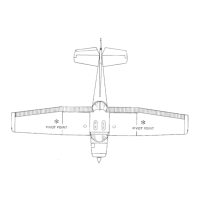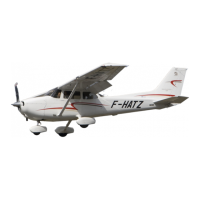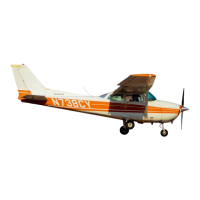Nice Air Operation Procedure Cessna 172
Copy Right Nice Air 2575 Robert Fowler Way, San Jose, CA 95148 Phone(408)729-3383
3
Slow Flight
Entry
1. Carburetor heat-On.
2. Throttle-1500 RPM, maintain altitude.
As you reduce power, you should anticipate pitch down and yaw to the right Don’t watch tachom-
eter needle to move from cruise to 1500RPM. Look at the horizon and cowling as you use peripheral
vision. Adjust control pressure to avoid nose from dropping and adjust rudder to keep the heading
constant.
3. Airspeed 80kt-Flap 10
70kt-Flap 20
60kt-Flap 30
The extension of ap cause nose to move up. If you allow it, you will gain altitude and airspeed
decreases too quick. Anticipate this and you need to add slight forward pressure on the control wheel
to avoid this. Watch horizon and cowling. Don’t x your eyes on the airspeed indicator and the ap
switch. After you set full ap, you need to apply back pressure to keep the altitude constant.
4. Airspeed 40kt-2000 RPM
Add right rudder as you add power to compensate the left turning tendency. PTS require you to main-
tain minimum controllable airspeed which is almost 35kt for C172. However, you need to be able
to y at any speed. Use trim. After this point, generally, pitch controls airspeed and power controls
altitude. Remember the pitch attitude which gives you 35 kt.
Climb
Apply full power. Adjust pitch to maintain the airspeed. Add right rudder to maintain the heading. For level
off, reduce power necessary to maintain the altitude. Adjust pitch to maintain the airspeed.
Descent
Reduce power as necessary. Adjust pitch to maintain the airspeed. Reduce right rudder to maintain the head-
ing. For level off, add power necessary to maintain the altitude. Adjust pitch to maintain the airspeed. Add
right rudder to compensate the left turning tendency.
Turn
Use 10 degrees bank. For the right turn, you need to use more right rudder because of the left turning tenden-
cy. On the other hand, the left turn dose not require much left rudder. Just reduce right rudder a little bit.
Recovery
1. Throttle-Full, maintain the altitude.
Add right rudder to compensate the left turning tendency. Adjust pitch “gradually” to maintain the alti-
tude. Don’t push nose down quickly. Pitch should be changed slowly from slow ight attitude(high) to
cruise attitude(level). Look at the horizon and cowling as you scan the altimeter.
2. Carburetor heat-Off, Flap-20
3. Airspeed 60kt-Flap 10
4. Airspeed 70kt-Flap Up
The ap retraction cause the nose to move down. You need to anticipate and add back pressure as
necessaryto maintain the altitude. As airspeed increases, you don’t need much right rudder anymore.
Reduce right rudder as needed.
5. Airspeed 80kt-Throttle CruiseReturn to cruise ight. Use trim.

